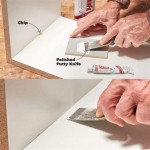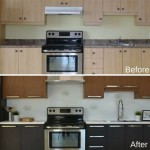How to Replace Bottom Kitchen Cabinets
Replacing bottom kitchen cabinets can be a significant undertaking, but it can transform the look and functionality of your kitchen. This comprehensive guide provides detailed steps and insights to guide you through the process, ensuring a successful and satisfying outcome.
1. Planning and Preparation
Before starting any demolition, thorough planning is essential. This involves assessing your current cabinets, determining your desired replacements, and gathering the necessary tools and materials.
Start by carefully evaluating your existing cabinets. Consider factors like their condition, size, and style. Determine whether you need a complete replacement or if some cabinets can be salvaged.
Next, define your desired new cabinets. Explore various styles, materials, and finishes to align with your kitchen's design aesthetics. Consider your storage needs and choose cabinet configurations accordingly.
Once you have a clear vision, create a detailed plan. This should include measurements of your existing cabinets, a layout of the new cabinets, and a list of materials and tools you will need.
Gather all necessary tools, including a level, tape measure, saw, drill, screwdriver, and safety gear. Ensure you have adequate workspace and ventilation for the project.
2. Removal of Existing Cabinets
The removal process requires caution and a systematic approach to prevent damage to your walls and flooring.
Start by disconnecting any appliances connected to the cabinets, such as the dishwasher or garbage disposal. Then, empty all contents from the cabinets and remove any shelves or drawers.
Carefully inspect the cabinets to identify any screws or nails attaching them to the walls or floor. Use a screwdriver or pry bar to loosen these fasteners, working from the top down.
Once the cabinets are detached, carefully lift them out, ensuring you have a clear path and assistance if needed. Dispose of the old cabinets responsibly.
3. Installation of New Cabinets
Installing new kitchen cabinets involves precision and careful alignment to ensure a smooth and functional kitchen.
Begin by preparing the walls and flooring. Ensure the surfaces are clean and level. If necessary, make any adjustments to accommodate the new cabinets.
Start with the base cabinets, using a level to ensure they are positioned correctly. Attach the cabinets to the walls using screws or nails, ensuring they are securely fastened.
Move on to the upper cabinets, following the same steps. Remember to use a level to ensure proper alignment. Leave space between the base and upper cabinets for countertop installation.
Once all the cabinets are installed, you can attach the cabinet doors and drawers. Ensure they are properly aligned and function smoothly.
4. Countertop and Finishing Touches
Installing countertops and adding finishing touches completes the kitchen cabinet replacement project.
Measure and cut your countertop material to fit the cabinet openings. Install the countertop securely, ensuring a seamless transition with the cabinets.
Add any desired backsplash, lighting, or hardware. Install cabinet handles, drawer pulls, and other hardware to personalize your kitchen.
Clean up any debris or leftover materials. Ensure all tools and equipment are stored properly.

Kitchen Removing Base Cabinet Countertops Backsplash

How To Replace Rotted Sink Base Cabinet Floor Bottom Easy Home Mender

How To Replace A Kitchen Sink Base Cabinet Vevano

How To Replace Rotted Sink Base Cabinet Floor Bottom Easy Home Mender

Kitchen Removing Base Cabinet Countertops Backsplash

How To Install Cabinets Like A Pro The Family Handyman

How To Install Kitchen Cabinets Diy Family Handyman

How To Install Kitchen Cabinets The Home Depot

Blind Corner Cabinets Step By Guide On How To Install

How To Install Kitchen Cabinets
Related Posts








